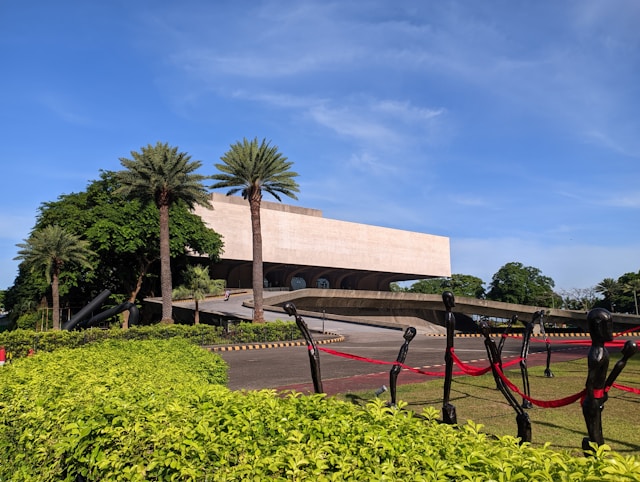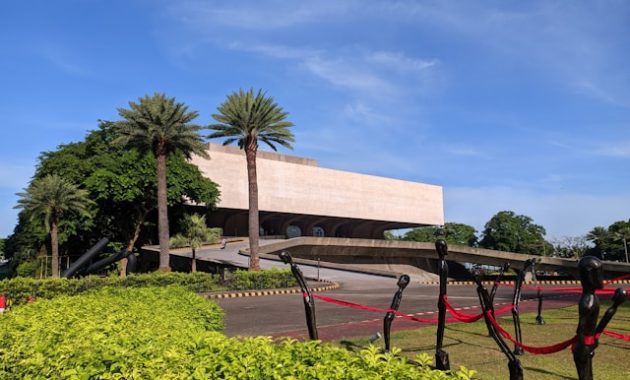
Manila, the capital city of the Philippines, is a vibrant metropolis rich in history and culture. Visitors to the city are often captivated by its blend of Spanish, American, and Filipino influences, making it a must-see destination for history buffs and culture seekers alike. From historical buildings to artistic hubs, these cultural landmarks offer a glimpse into Manila’s past and present. Here are the top 10 cultural landmarks in Manila that every visitor should explore.
1. Intramuros: The Walled City
At the heart of Manila lies Intramuros, a historical enclave surrounded by high stone walls, making it the oldest district in the city. Intramuros was the center of Spanish colonial power in the Philippines, and within its walls, you’ll find numerous cultural landmarks that reflect its rich heritage.
Visitors can stroll through Fort Santiago, a citadel that played a significant role during the Spanish, American, and Japanese occupations. Another must-see is the Manila Cathedral, a grand basilica known for its Romanesque architecture. Don’t forget to visit San Agustin Church, a UNESCO World Heritage Site, which is famous for its Baroque architecture and ornate interiors.
2. Rizal Park: A National Shrine
Rizal Park, also known as Luneta, is one of the most iconic landmarks in Manila. This massive urban park is dedicated to Dr. José Rizal, the national hero of the Philippines. A monument to Rizal stands in the center of the park, serving as a symbol of freedom and independence.
Aside from the monument, Rizal Park is home to several other attractions, such as the National Museum of the Philippines, the Chinese Garden, and the Japanese Garden. The park also serves as a gathering place for various events, from cultural performances to peaceful protests.
3. National Museum Complex
The National Museum Complex is a must-visit for anyone looking to immerse themselves in Filipino art, culture, and history. It consists of several buildings, each housing different collections. The National Museum of Fine Artsshowcases the works of Filipino masters, including the famous painting “Spoliarium” by Juan Luna.
The National Museum of Anthropology features exhibits on the country’s ethnological history, including traditional clothing, artifacts, and ancient tools. The National Museum of Natural History highlights the country’s rich biodiversity and geological history, making it a fascinating stop for nature enthusiasts.
4. Cultural Center of the Philippines

The Cultural Center of the Philippines (CCP) is the hub for contemporary Filipino performing arts. Established in 1966, it has become the primary venue for showcasing the best of Filipino theater, dance, music, and visual arts. Designed by National Artist for Architecture, Leandro Locsin, the CCP building is an iconic modernist structure along Roxas Boulevard.
Visitors can attend performances by the Philippine Philharmonic Orchestra, the Ballet Philippines, and other acclaimed Filipino artists. The center also hosts numerous art exhibits and film screenings throughout the year.
5. San Sebastian Basilica
The San Sebastian Basilica is a stunning example of Gothic Revival architecture in the heart of Manila. It is unique for being the only all-steel church in the Philippines and one of the few in the world. Built in the late 19th century, the church’s intricate design and towering spires are reminiscent of European cathedrals.
The basilica’s interior is equally impressive, featuring stained glass windows and ornate ironwork. It’s a place of tranquility amidst the bustling city and a testament to the Philippines’ religious heritage.
6. Paco Park and Cemetery
Paco Park is a charming circular park that was once a cemetery during the Spanish colonial period. It served as the final resting place of José Rizal before his remains were transferred to Luneta. The park’s lush greenery and historic circular chapel make it a popular spot for weddings and outdoor concerts.
Despite its somber origins, Paco Park is now a peaceful retreat for locals and tourists alike. The chapel, St. Pancratius Chapel, located at the center of the park, adds a serene ambiance to the area.
7. Quiapo Church and Plaza Miranda
The Quiapo Church, officially known as the Minor Basilica of the Black Nazarene, is one of the most significant religious sites in Manila. It is famous for housing the Black Nazarene, a centuries-old statue of Jesus Christ believed to have miraculous powers.
Every January 9th, millions of devotees participate in the Traslación, a religious procession where the statue is paraded through the streets of Manila. Aside from its religious significance, Quiapo Church is also an architectural landmark, with its beautiful Baroque façade.
8. Binondo: The Oldest Chinatown in the World
Binondo, Manila’s Chinatown, is the oldest Chinatown in the world, established in 1594. It is a bustling district that represents the fusion of Chinese and Filipino cultures. Binondo is a paradise for food lovers, offering a wide variety of traditional Chinese dishes with a Filipino twist.
Visitors can explore Ongpin Street, lined with restaurants, tea houses, and shops selling traditional Chinese goods. Notable landmarks in Binondo include the Binondo Church, a historic Spanish-Chinese Baroque church, and the Kuang Kong Temple, a Taoist temple dedicated to the Chinese god of war.
9. Manila City Hall and the Clock Tower
The Manila City Hall is one of the city’s most recognizable landmarks, thanks to its iconic clock tower. The building’s neo-classical design reflects the American architectural influence on the city. The clock tower, which is the largest in the Philippines, offers a panoramic view of Manila and is beautifully illuminated at night.
Visitors can also explore the nearby Arroceros Forest Park, a hidden oasis in the heart of the city that is home to various tree species and birdlife.
10. Malacañang Palace
The Malacañang Palace is the official residence and workplace of the President of the Philippines. Located along the banks of the Pasig River, it is one of the most historically significant buildings in Manila. While the palace itself is not open to the public, visitors can explore the Malacañang Museum, which provides a glimpse into the history of the Philippine presidency.
The museum displays artifacts, photographs, and documents related to the lives and legacies of past Philippine presidents. It is a great place to learn about the country’s political history and the workings of its government.